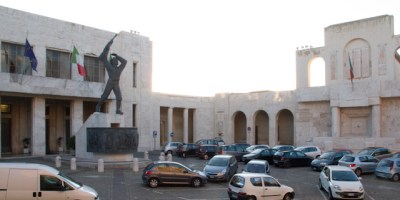|
Violets and primula spangle the woodland floor, the almond trees have blossomed, skylarks are singing their hearts out, and the snow is loosing its hold on the mountain tops - Oh, to be in the Marche now that April's here! A warm welcome to the spring edition of the Marche Voyager Newsletter. And a Buona Pasqua to you all.
Little weeds
Now is the season to comb the fields and woodland for erbe del campo, the various wild herbs that still play a part in the dieta marchigiana.
Weeds such as the common dandelion and the field poppy are eaten when young either raw in salads as part of a misticanza, or boiled and quickly tossed in good olive oil with a clove of garlic and a squeeze of lemon juice.
One of the most sought after of these wild plants is Silene vulgaris, the common weed bladder campion. In the Marche it is variously known as striti, stridi, or stringoli and the young shoots are lightly cooked and used in a frittata, or omelette, or fried with onions and some ham for dressing pasta.
A useful blog on wild herbs in the Marche (in Italian and English)
Naughty but nice
The annual Fritto Misto festival at Ascoli Piceno features a feast of fried food - including the town's signature stuffed olives - for a week from Wednesday 24 April to Wednesday 1 May. This year's event offers over 50 kinds of deep-fried wickedness from Italy and abroad.
Fritto Misto website (in Italian)
Barocci redivivus
Federico Barocci was one of the most talented artists of late 16th century Italy but has remained little known outside of his native Marche. However, a major new show of his work at London's National Gallery looks set to bring him to the wider public he deserves.
He was born sometime around 1533 in Urbino where he remained for most of his life until his death in 1612. Fascinated by the human form, he fused charm and compositional harmony with an unparalleled sensitivity to colour.
The Barocci: Brilliance and Grace exhibition runs until 19 May 2013, and has been described by the Daily Telegraph's art critic Richard Dorment as "staggeringly ambitious and heartbreakingly beautiful".
British National Gallery Barocci exhibition website
Safely landed
Rumours of the possible closure of Ancona airport have been laid to rest with the publication of Italian government plans that include the Marche's main airport as one of the country's airports of "national importance".
Ancona is one of only 31 Italian airports which will receive state support; all other airports, including Umbria's Perugia airport, will have to trust to a "wing and a prayer" from cash-strapped regional authorities.
Fair squares #10
This month's image of one of the region's piazze, or town squares, features the unusual Piazza Corridoni in Corridonia in the southern Marche. The name of the town was changed in 1931 by Benito Mussolini from Pausula in honour of Filippo Corridoni, a war hero and union activist who died in the 1st World War in 1915. The town's main square was completely remodelled in travertine and is dominated by a striking statue of Corridoni by Oddo Aliventi (1936).

photo: huntley hedworth
Battling on
The swallowtail battlements of the Castello della Rancia, just east of Tolentino, were the backdrop to the battle which saw the defeat of Giocchino Murat, the Napoleonic King of Naples, whose first 19th century bid to unify Italy was thwarted by Austrian troops in May 1815.
The Battle of Tolentino is re-enacted each May in a colourful event with hundreds of extras - this year's event is set to take place on Saturday and Sunday 4 & 5 May.
Tolentino 815 Association website
Artist's eye view of the Marche
As it speaks so well of Marche Voyager how could we not give this enchanting Kindle ebook a plug - What Ho! Giotto tells the story of two artists, Freddy and Fiona Owen, setting up home in the central Marche; Witty and perceptive with a good visual feel for Italian daily life.
What Ho! Giotto on Amazon.co.uk and on Amazon.com
Factoid
#28:
Between 1796 and 1806 Napoleon Bonaparte carried away over 500 works of art from Italy of which only 258 were returned after the emperor's defeat at Waterloo. Many fine paintings that once adorned Marche churches and palaces now have to be admired at the Louvre in Paris or the Brera gallery in Milan.
This newsletter is only sent to people who have personally subscribed to it through the Marche Voyager web site. If you do not wish to receive further issues please unsubscribe here. Alternatively, please e-mail us
giving the e-mail address to which this newsletter was sent and
"unsubscribe" in the message subject. You are subscribed at [EMAIL]
.
If you have problems reading this HTML newsletter you can see it on the web here.
We appreciate feedback - any comments, suggestions, criticism or praise gladly received; E-mail us here.
© le-marche.com
| 